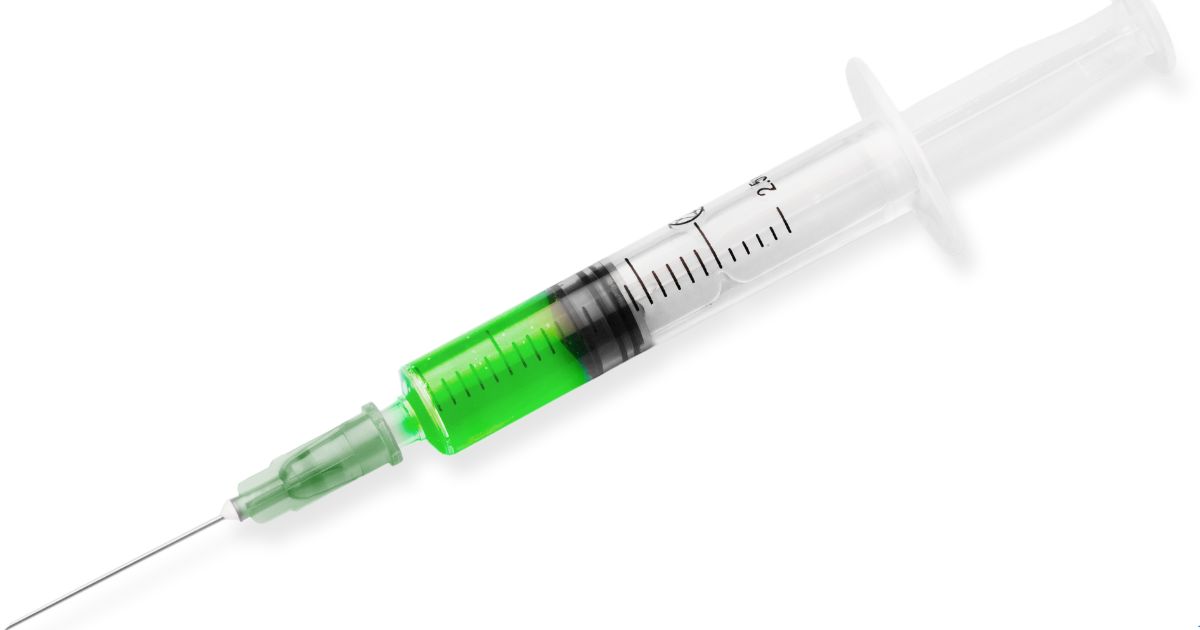Meth psychosis is a terrifying and dangerous side effect of crystal meth abuse. In this article, we’ll explore that phenomenon and tell you what you need to know.
What Is Crystal Methamphetamine?
Crystal methamphetamine, commonly known as “crystal meth,” is a powerful and highly addictive central nervous system stimulant. It is a form of methamphetamine that appears as clear, crystalline shards resembling broken glass or ice. This drug is typically smoked, though it can also be snorted, injected, or ingested orally.
Methamphetamine abuse is a growing problem in the United States. From 2015 to 2019, frequent use of the drug increased by 66%. In 2023, over 2.6 million Americans used methamphetamine in the past year.
Street names for crystal methamphetamine include:
- Crystal meth
- Meth
- Crystal
- Ice
- Crank
- Glass
- Speed
Methamphetamine directly impacts the brain’s reward system by increasing the release of dopamine, a neurotransmitter associated with pleasure and motivation. This rapid and intense release of dopamine is what makes the drug highly addictive. Over time, repeated use can cause significant changes to the brain, impairing its ability to function normally. Meth psychosis is a particularly dangerous side effect of crystal meth abuse.
Methamphetamine Side Effects
Methamphetamine use can lead to a wide range of short-term and long-term side effects. These can vary depending on the method of consumption, the dose, and the individual’s health.
Below are the common side effects:
- Euphoria
- Increased heart rate
- Reduced appetite
- Increased energy
- Increased internal body temperature
- Dilated pupils
- Increased focus
- Insomnia
In the long term, there are a variety of dangerous side effects – most notably meth addiction, but also dental problems (meth mouth), skin sores, increased risk of heart failure or stroke, and mental health issues such as meth psychosis.
What Is Methamphetamine Psychosis?
Meth psychosis, which results from chronic meth use, is a terrifying form of drug psychosis in which a person experiences persistent visual hallucinations, paranoia, and persecutory delusions, similar to a psychotic disorder. It’s particularly similar to schizophrenia.
Although there are various factors behind it, meth psychosis is most often the result of chronic meth use.
Meth Psychosis Symptoms
There are a variety of unpleasant and highly visible symptoms of meth psychosis:
- Hallucinations: A person with meth psychosis may experience a variety of hallucinations. They may see things that aren’t there, including, disturbingly, bugs crawling on the skin (something known as “formication.”). They may even get the sensation of the “bugs” crawling on them, something known as “meth mites.” There are also audio hallucinations as well, like hearing voices that aren’t there.
- Paranoia: A person with meth psychosis may feel like they are being persecuted or followed, leading to extreme fear and distrust.
- Delusions: This includes all manner of false beliefs, including the idea that everyday events have special meaning, that strangers mean the meth user harm, or that they have special powers or knowledge.
- Increased Agitation: Users may become extremely agitated or aggressive, often due to heightened anxiety and fear stemming from their hallucinations or delusions.
- Cognitive Impairment: Poor judgment, difficulty focusing, and impulsive decisions due to an impaired ability to assess reality.
Meth psychosis is a serious condition that requires prompt medical attention. If you or someone you know is experiencing these symptoms, seeking professional help is crucial for recovery and safety.
How Long Does Meth Psychosis Last?
The symptoms of meth psychosis can last for days, weeks, or even longer, depending on the individual’s drug use patterns, the extent of the damage to their brain, and whether they receive treatment.
In some cases, meth psychosis can persist long after a person stops using methamphetamine, leading to ongoing mental health issues even after the drug has left their system. According to a study, meth psychosis can last anywhere from one to six months after the last use of meth.
Get confidential help from our addiction treatment specialists in Orange County. Call to join our rehab program today!
Call 866-881-1184What Causes Meth Psychosis?
Meth psychosis is caused by the drug’s powerful effects on the brain’s dopamine system, which can lead to disturbances in cognition, perception, and behavior. The longer someone uses methamphetamine, the more likely they are to experience meth psychosis, especially if they are using large doses or have been using the drug for extended periods.
A number of studies exist that unsurprisingly demonstrate a link between a person’s history of mental illness generally and their predisposition for meth psychosis. Particular mental illnesses that may be risk factors include antisocial personality disorder and certain affective disorders, as well as polysubstance use. Sleep deprivation – bad for a person’s mental state even if they don’t use meth – is also a factor.
Perhaps most intriguingly, the degree of overlap between symptoms of schizophrenia and those of meth psychosis seems to point to that being a risk factor. Per one study: “According to this line of research, first-degree relatives of individuals with MA psychosis are more than 5 times more likely to have schizophrenia, relative to MA users who did not develop psychosis.”
Looking for quality substance abuse treatment that’s also affordable? South Coast accepts most major insurance providers. Get a free insurance benefits check now.
Check Your CoverageFinding Treatment for Crystal Meth Addiction
If you or a loved one are seeking treatment for addiction, South Coast Behavioral Health is here to help. The first step in treating addiction is a medical detox. This means using drugs to manage withdrawal symptoms.
Our medical detox program in California is staffed by caring and compassionate professionals who can provide you with medications to manage your withdrawal symptoms.
At South Coast, we take pride in offering care that is closely tailored to specific issues. To that end, we offer gender-specific detox programs, with medical detox for men in Irvine, CA, and medical detox for women in Huntington Beach, CA.
After detoxing, proper treatment can begin.
Treatment for substance abuse takes place along an entire spectrum of care. Along that entire spectrum are various behavioral therapies, support groups, and the use of medically-assisted treatment (MAT).
These levels of treatment are, in order, as follows:
Residential Treatment in California
After successfully completing medical detox, you’ll receive inpatient treatment in Orange County, California. There, you’ll receive medically-assisted treatment and dual diagnosis treatment to deal with any cravings or co-occurring mental health issues you may be battling.
We also offer residential treatment facilities in Costa Mesa, Irvine, and Huntington Beach for those who desire gender-specific treatment. There, patients get round-the-clock medical attention and monitoring while living at the institution full-time.
In addition to individual and group counseling and medication management, you’ll also have access to leisure activities and family support services.
Partial Hospitalization in California
Most clients start substance abuse treatment with South Coast in our residential treatment program. After completing that, many desire something that still provides structure and support but with extra space and time to oneself. For that, we offer Partial Hospitalization in Newport Beach.
A step down from inpatient care but with more structure than conventional outpatient programs, partial hospitalization offers a good balance for those looking to ease back into normal life. Clients can receive care five to seven days a week for a number of hours each day, returning back to their homes in the evening.
This way, they can recover without putting their daily lives completely on hold, receiving intense therapeutic interventions like group and individual therapy, skill development, and medication management as necessary.
Intensive Outpatient Treatment in California
For those leaving inpatient residential treatment or partial hospitalization, intensive outpatient programs (IOP) are yet another gradual step forward on the road to recovery.
With a focus on group therapy, individual counseling, and education, clients undergoing Intensive Outpatient Treatment in Newport Beach can meet three to five days a week. Each session lasts three hours.
This level of care requires the least amount of attendance at an addiction and behavioral health facility.
Start Today
If you or a loved one are struggling with addiction but wonder how long addiction treatment takes or have other questions, call us at 866-881-1184 or contact us here. Our highly qualified staff will be happy to help give you an idea of what to expect from your addiction recovery timeline, verify your insurance, and assist with any other questions you may have.
- Methamphetamine Trends in the United States
- Past year methamphetamine users U.S. 2009-2023 | Statista
- Formication – an overview | ScienceDirect Topics
- Methamphetamine-Associated Psychosis – PMC
- The risk of psychotic symptoms associated with recreational methamphetamine use – PubMed
- Methamphetamine-associated psychosis – PubMed
- Methamphetamine Psychosis: Epidemiology and Management – PMC









